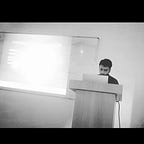Retrieval Augmented Generation: A Mathematical and Architectural Symphony in AI
Generative AI has made significant strides in recent years, enabling machines to create human-like text, images, and even music. One emerging approach that combines the strengths of both retrieval and generation models is known as retrieval augmented generation. This technique leverages the power of memory and creativity to enhance the capabilities of generative models, offering promising results in various applications.
In the evolving landscape of Generative AI, the fusion of retrieval and generation models has given rise to a powerful paradigm known as retrieval augmented generation. This innovative approach combines mathematical frameworks, intricate coding, and advanced architectural designs to synergize memory and creativity in artificial intelligence.
RAG, or Retrieval Augmented Generation, operates by taking an input and retrieving a collection of pertinent documents from a specified source, such as Wikipedia. These retrieved documents are then combined as context with the original input prompt and fed into the text generator, ultimately producing the final output. This unique approach renders RAG adaptable to scenarios where factual information may undergo changes over time. This adaptability proves advantageous, especially when compared to Language Models (LLMs), whose parametric knowledge remains static. RAG, in contrast, allows language models to dynamically access the latest information without the need for retraining, facilitating the generation of reliable outputs through retrieval-based generation.
The work of Lewis et al. in 2021 introduced a versatile fine-tuning recipe for RAG. In this methodology, a pre-trained seq2seq model serves as the parametric memory, while a dense vector index of Wikipedia functions as the non-parametric memory. The retrieval of information from this index is accomplished using a neural pre-trained retriever. This comprehensive approach enables the augmentation of the language model’s capabilities without the necessity of retraining, showcasing a dynamic and efficient method for incorporating the latest information into the generative process.
Key Components of Retrieval Augmented Generation:
- Retrieval Models: Retrieval models are responsible for efficiently searching and retrieving relevant information from a given dataset. These models typically employ techniques like information retrieval, document ranking, or semantic similarity to identify data points that align with the input or context.
- Generation Models: Generation models, on the other hand, focus on creating new content based on the retrieved information. These models can be language models, image generators, or other creative algorithms that take inspiration from the retrieved data to generate outputs that are contextually relevant and coherent.
- Memory Mechanisms: The integration of retrieval and generation often involves the incorporation of memory mechanisms. This allows the system to store and recall relevant information during the generation process. Attention mechanisms, neural networks with memory cells, and other memory-augmented architectures play a crucial role in this synergy.
Applications of Retrieval Augmented Generation:
- Content Creation: Retrieval augmented generation is particularly effective in content creation scenarios, such as writing articles, generating code snippets, or composing music. By retrieving relevant information from a dataset, the generative model can then use this information to craft unique and contextually appropriate content.
- Conversational Agents: Chatbots and conversational agents benefit from retrieval augmented generation by providing responses that are not only contextually relevant but also incorporate learned knowledge. These systems can access a vast database of information and use it to generate more informed and context-aware replies during conversations.
- Creative Writing Assistance: Writers and content creators can leverage retrieval augmented generation to overcome writer’s block or gather additional inspiration. By retrieving relevant examples or information from a dataset, the generative model assists in generating creative and diverse content.
Mathematical Frameworks:
- Similarity Metrics: Retrieval models rely on similarity metrics to measure the relevance of retrieved data. Common mathematical measures include cosine similarity, Jaccard similarity, or other distance metrics, depending on the nature of the data being processed.
# Example of Cosine Similarity calculation
import numpy as np
from sklearn.metrics.pairwise import cosine_similarity
query_vector = np.array([1, 2, 3])
document_vector = np.array([4, 5, 6])
similarity_score = cosine_similarity([query_vector], [document_vector])[0][0]2. Attention Mechanisms: Generation models often incorporate attention mechanisms to dynamically allocate weights to different parts of the input sequence during the generation process. This enhances the model’s ability to focus on relevant information.
# Example of Attention Mechanism
import tensorflow as tf
from tensorflow import keras
from tensorflow.keras.layers import Input, Embedding, Attention
inputs = Input(shape=(sequence_length, embedding_dim))
query_seq = Embedding(input_dim=vocab_size, output_dim=embedding_dim)(inputs)
key_seq = Embedding(input_dim=vocab_size, output_dim=embedding_dim)(inputs)
attention_result = Attention()([query_seq, key_seq])Code Implementation:
- Retrieval Model: Implementing a simple retrieval model using TF-IDF (Term Frequency-Inverse Document Frequency) and cosine similarity.
from sklearn.feature_extraction.text import TfidfVectorizer
from sklearn.metrics.pairwise import linear_kernel
# Assuming 'corpus' is a list of documents and 'query' is the input
vectorizer = TfidfVectorizer()
corpus_tfidf = vectorizer.fit_transform(corpus)
query_tfidf = vectorizer.transform([query])
similarity_scores = linear_kernel(query_tfidf, corpus_tfidf).flatten()2. Generation Model with Memory Mechanism: A basic implementation of a sequence-to-sequence model with attention for text generation.
import tensorflow as tf
from tensorflow.keras.layers import Input, Embedding, LSTM, Dense, Attention
encoder_inputs = Input(shape=(encoder_input_length,))
encoder_embedding = Embedding(input_dim=vocab_size, output_dim=embedding_dim)(encoder_inputs)
encoder_lstm, encoder_state = LSTM(hidden_units, return_state=True)(encoder_embedding)
decoder_inputs = Input(shape=(decoder_input_length,))
decoder_embedding = Embedding(input_dim=vocab_size, output_dim=embedding_dim)(decoder_inputs)
decoder_lstm = LSTM(hidden_units, return_sequences=True, return_state=True)
decoder_outputs, _ = decoder_lstm(decoder_embedding, initial_state=encoder_state)
attention_layer = Attention()([decoder_outputs, encoder_outputs])
decoder_concat = tf.concat([decoder_outputs, attention_layer], axis=-1)Challenges and Future Directions:
Despite its potential, retrieval augmented generation comes with its set of challenges. Balancing creativity with adherence to retrieved information, handling ambiguous queries, and mitigating biases present in the training data are among the ongoing concerns. Future research may focus on refining these models, improving memory mechanisms, and exploring applications in domains such as medical diagnosis, scientific research, and more.
Conclusion:
Retrieval augmented generation in generative AI represents a promising approach that combines the strengths of retrieval and generation models. This synergy enhances the capacity of AI systems to produce contextually relevant and creative outputs across various applications. As research and development in this field continue, we can expect further advancements that will unlock new possibilities for AI-driven content creation and knowledge dissemination.
Thanks for reading !! Please share and follow for more. 🙌
Connect with me:
